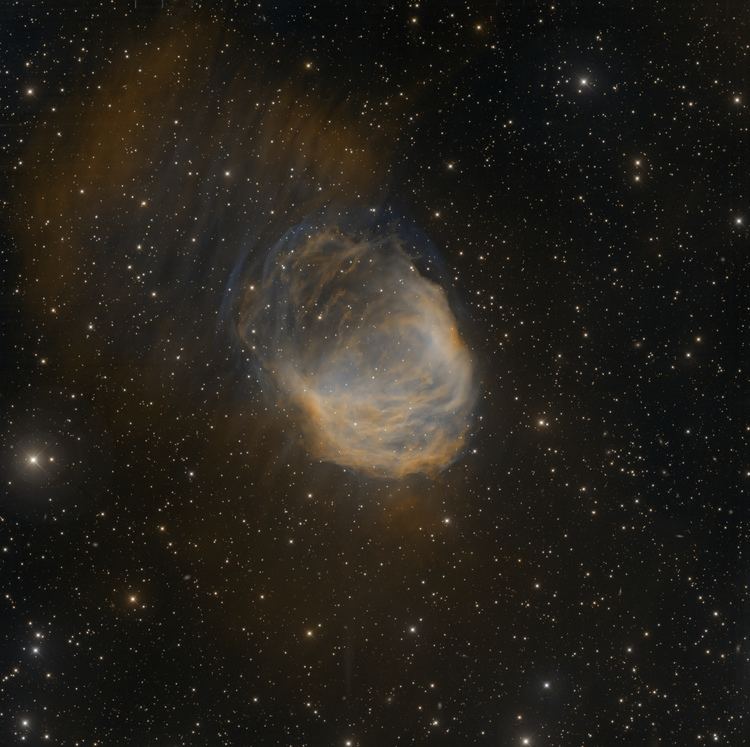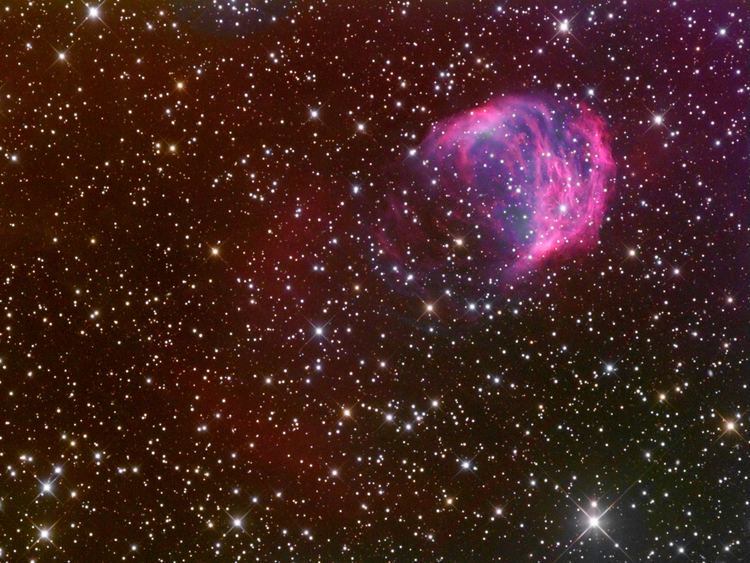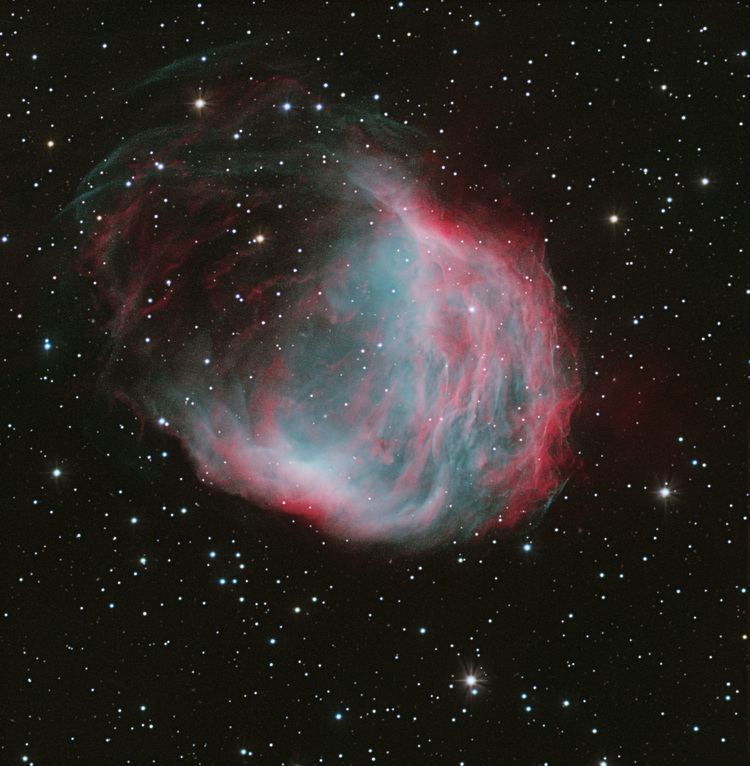Right ascension 07 29 02.69 Distance 1,500 ly (460 pc) ly Absolute magnitude (V) 7.68 | Declination +13° 14′ 48.4″ Apparent dimensions (V) 4 ly Magnitude 15.99 Apparent magnitude (V) 15.99 | |
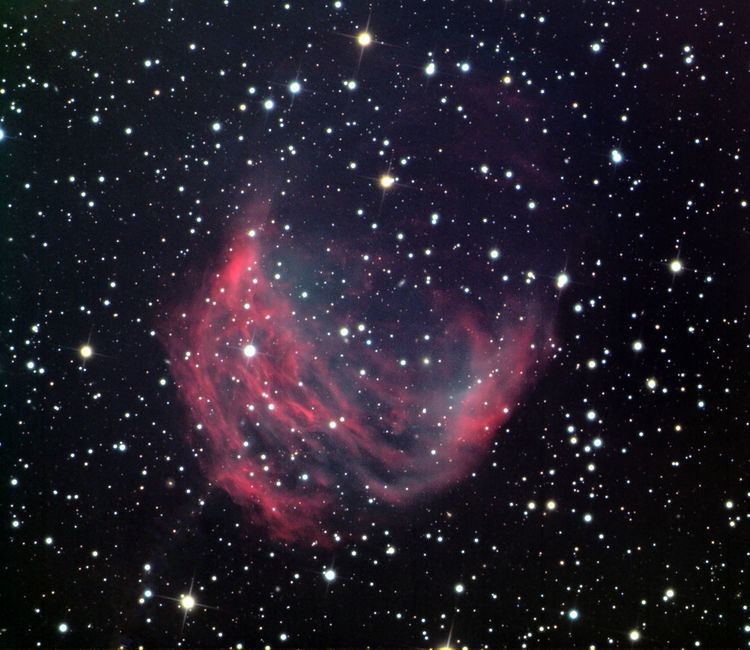 | ||
Notable features Very large & very low surface brightness Similar IC 443, Abell 31, NGC 2359, Sh2‑155, Sh2‑101 | ||
Medusa nebula s writhing hair glowing glare is irresistible video
The Medusa Nebula is a large planetary nebula in the constellation of Gemini on the Canis Minor border. It also known as Abell 21 and Sharpless 2-274. It was originally discovered in 1955 by UCLA astronomer George O. Abell, who classified it as an old planetary nebula. The braided serpentine filaments of glowing gas suggests the serpent hair of Medusa found in ancient Greek mythology.
Contents
- Medusa nebula s writhing hair glowing glare is irresistible video
- Star hopping 45 find the seagull nebula the medusa nebula and m48
- References

Until the early 1970s, the Medusa was thought to be a supernova remnant. With the computation of expansion velocities and the thermal character of the radio emission, Soviet astronomers in 1971 concluded that it was most likely a planetary nebula.
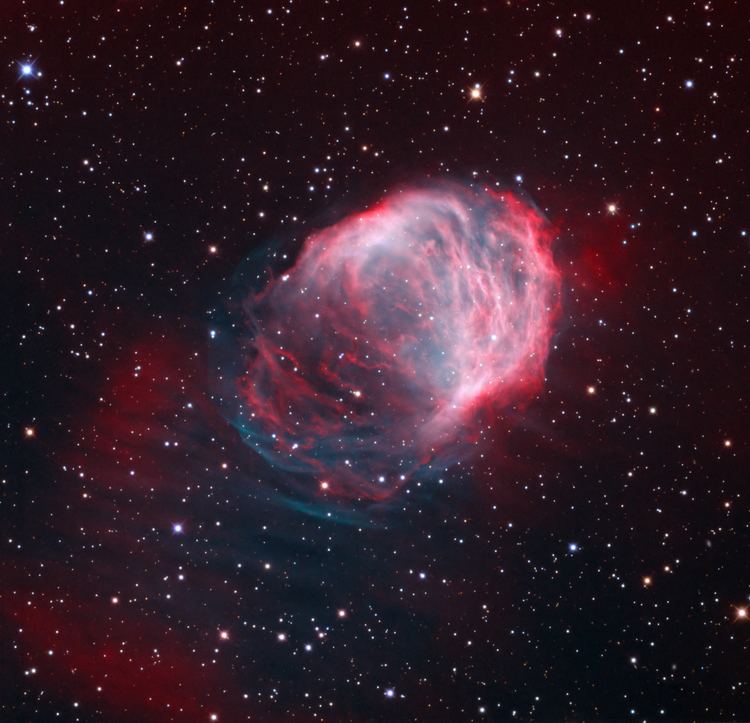
As the nebula is so big, its surface brightness is very low, with surface magnitudes of between +15.99 and +25 reported. Because of this most websites recommend at least an 8-inch (200 mm) telescope with an [O III] filter to find this object although probably possible to image with smaller apertures.

Star hopping 45 find the seagull nebula the medusa nebula and m48
